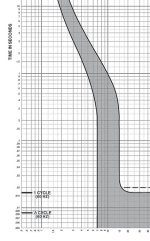s219
Super Member
- Joined
- Dec 7, 2011
- Messages
- 8,548
- Location
- Virginia USA
- Tractor
- Kubota L3200, Deere X380, Kubota RTV-X
I would replace the outlet with a GFI. Much better protection than a 15 amp breaker. There are testers available to plug in and test the breaker but not so cheap. A GFI tester will probably work. I have not tried it but it creates a short to test the GFI.
I don't think GFI would have done a thing in this case, since it really only detects a difference in current between what's flowing on the hot and what's flowing on the neutral. If they don't match to within a tolerance, it assumes current has been diverted to ground and trips.



